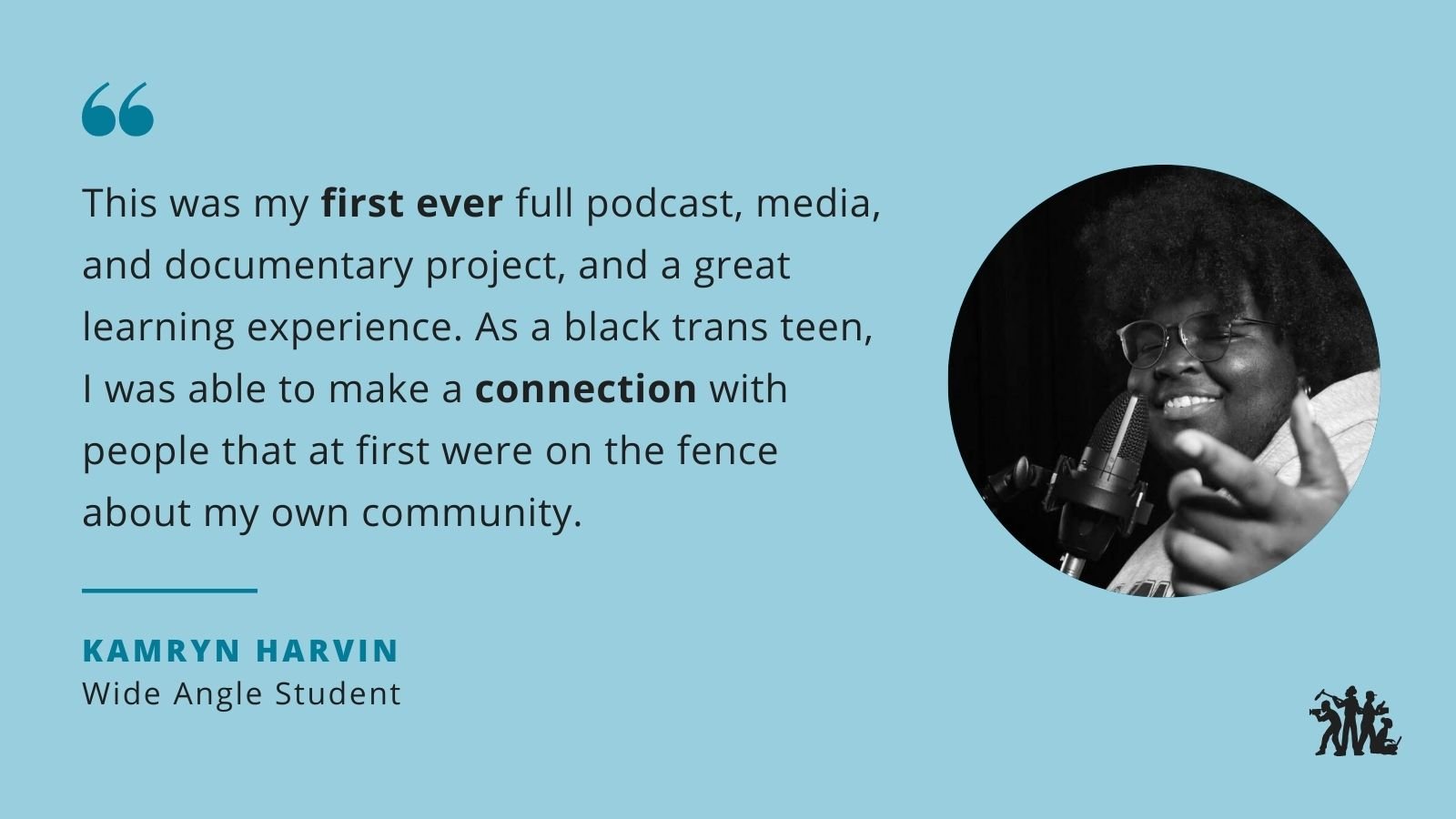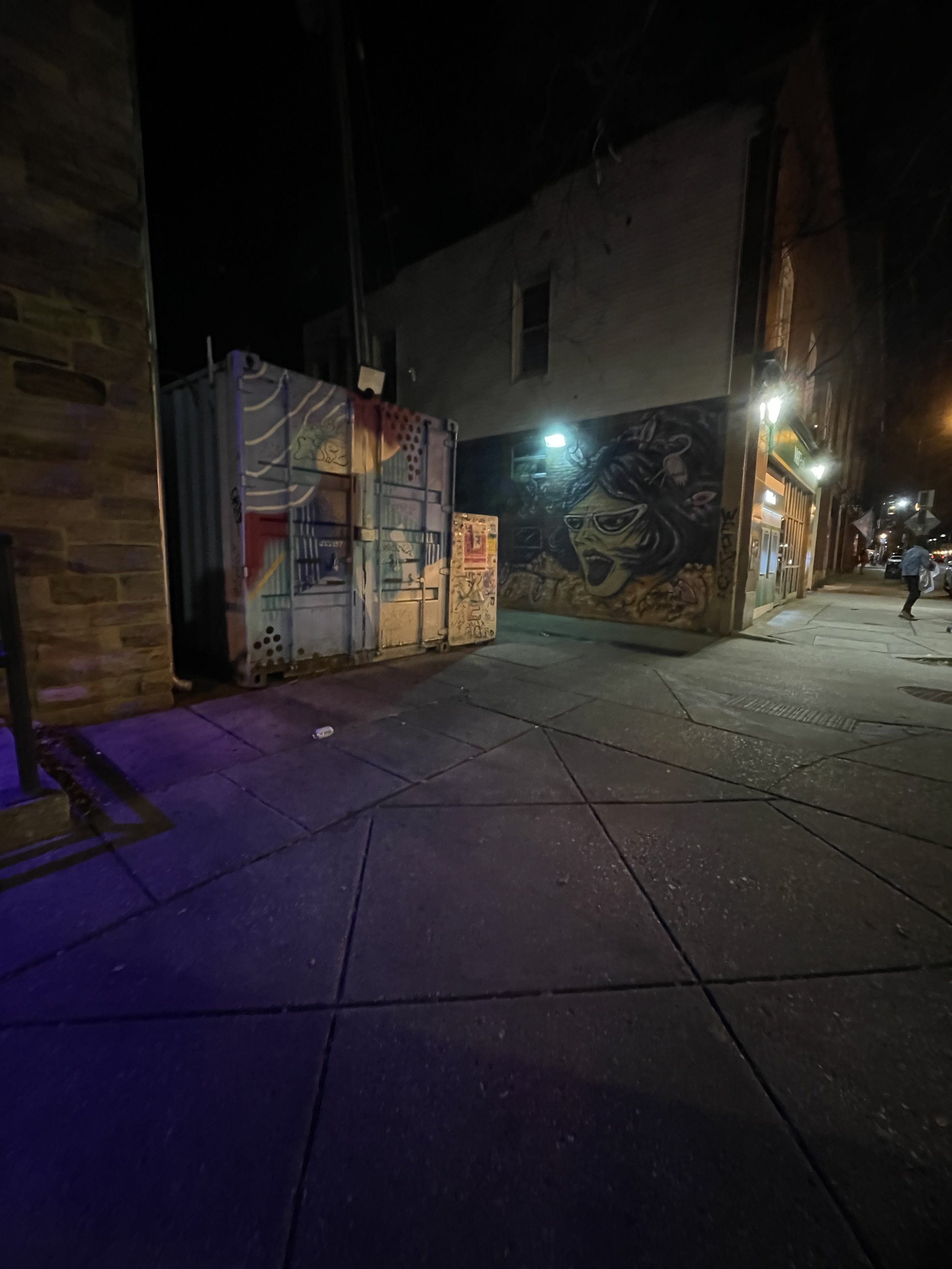BLACK IN HAMPDEN: VOICES, STORIES AND PERSPECTIVES
MEET THE AUTHOR
Kamryn Harvin is a senior at Bard High School Early College and a participant in Wide Angle's video program. He has a passion for media and environmental engineering with hobbies in producing music.
My project is a podcast episode called ‘Black in Hampden’ about being a person of color living in the Hampden area – a historically predominantly white, working-class neighborhood in Baltimore, known for its past reputation of racism. As a black teen in Hampden, when I tell others the area I live in, I am bombarded with questions about how I navigate this area with the history it has. My project serves as a new testament to combat the stereotype the neighborhood faces for its terrible past. I want to break the sad narratives and share my perspective as someone young and new to the area.
Kamryn Harvin at the skatepark in Hampden.
Patrick Oray, my teacher (and Wide Angle’s Board President), first gave me the idea when discussing where we lived in our social justice class. When he first suggested it, I was on the fence. I had no prior knowledge of the racist protest or the presence of the KKK after living here for a couple of months. When I told him I didn't know what he was referring to, he encouraged me to look up the horrifying history and compare it to how I feel living there as a person of color.
In 1988, Hampden was a predominantly white working-class neighborhood. A black family bought a row house in the area but was welcomed with bomb threats and people busting out their home windows with rocks (The Washington Post). The harassment was so extreme that the family had police parked outside their home daily. The community broke down into a terrible racial war. Men started handing out Ku Klux Klan applications, trying to take advantage of the community tension. This poor black family faced harassment only seven weeks after they moved to the area, only to be right down the street from a church that also operated as a ‘KKK’ hideout.
As we continue to face racism, there are problems that are urgent and prominent for every race. Wrapping up an interview I did with a Hampden native, we touched on the topic briefly. We agreed that as the new presidency arrives, everyone should be trying to come together for a better world. She put it, “People of every race want to go to college. Every race in the lgbtq community has plans to get married. A mother from Mexico may wish for a better life here in the States for her kids, but any race mother has that instinct. At the end of the day, no matter what color, we have similar troubles, but they can only be solved if we see everyone as equal no matter race, gender, sexual orientation, religion, or class.”
Even after this race war throughout the 1900s, Hampden has transformed into a place of mixed culture and race. A local skate park brings skaters from across Baltimore to monthly skate-offs and band parties. There is an Enoch Pratt library with a teen center for nearby high school ACCE and middle schools in the area. Now, this doesn't mean that the racism of Hampden is gone. Just a year ago, a local black business owner recalls being called the n-word four to five times a day (The Baltimore Banner). To combat the neighborhood's stigma, a local pastor at that same church made a statement about wanting to move forward and welcoming other races with open arms. Most people now say that Hampden has been made for the ‘hippies,’ but what they have done is open their doors for everyone to flourish.
The graffiti in the Hampden skatepark shows the history of the area. Racist tags can be seen but have also been covered up by the support of others.
There is a lot of graffiti in the Hampden area mainly being used as a way for the community to come together to decorate and cover up the past of Hampden.
This was my first ever full podcast, media, and documentary project, and a great learning experience. As a black trans teen, I was able to make a connection with people who, at first, were on the fence about my own community. After a sit-down and open conversation, they opened their minds to something that many just shut down and deny. I helped guide them to see the truth of not one but two minorities in the world. I will continue to have open conversations, attempting to spread education and knowledge of life as a POC with the goal of bringing different communities together. At the same time, there are also some things I would do differently next time. First, I would want to plan months ahead, but I only had two weeks of preparation because it was a class assignment. Second, I would ask others for help in thinking through the projects and putting them together – two or more heads are definitely better than one. This was a huge topic, and it could’ve expanded to be way more than just racism in Hampden. It will definitely expand more with time, potentially becoming a series!
I hope my blog and project will make people start exploring outside of their typical environment, seeking knowledge from new communities–even ones you are on the fence about–challenging the history or stereotype that it has. A lot of people are scared of having these conversations, and I think as a society, we should be more open to this fear and handle it appropriately.
I want people to take this message from this project: There are other places in the world that were once like Hampden but have not had the same turnaround, which, as we come into 2025, needs to be looked at. In these upcoming years, the need for unification has become stronger than ever, and race is no longer something that should be argued over as there are other important topics like women's rights, the war in Gaza, and the economic state of the country. The podcast will officially be out in mid-February, but snippets and updates can be found on my Instagram account @Sirrynn.





